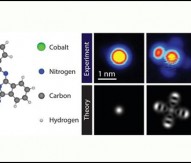
Polymers can be semimetals
Researchers have discovered that polymers can behave like insulators, semiconductors, and metals – as well as semimetals.
The researchers, under the leadership of Xavier Crispin, Docent in organic electronics at Linköping University, are behind the breakthrough.
Traditional plastics, or polymers, are electrical insulators. In the seventies a new class of polymers that conduct electricity like semiconductors and metals was discovered. Now twenty researchers from five universities worldwide have collaborated to prove that polymers can also be semimetals.
Crispin previously discovered that conductive polymers can be thermoelectric. A thermoelectric material undergoes a diffusion of electronic charge carriers to the cold region when the material is submitted to a temperature gradient. As a result an electric potential is created between the cold and hot side of the material. This thermo-voltage is the basis of thermo-couples used for instance in an everyday oven thermometer.
Crispin said: “Our experiments yielded a high thermoelectric effect, a Seebeck effect, which indicated that we were dealing with semimetals. But we needed proof.”
The researchers are from Sweden, Australia, Belgium, Norway and Denmark.
Thermoelectric generators are available on the market today, but these are made from alloys of bismuth and the semimetal tellurium. Unlike the polymers, these elements are both rare and expensive.
Magnus Berggren, professor of organic electronics, said: “These polymers are both easy and inexpensive to produce. That we now have an understanding of these phenomena will really drive developments forward, and will open up a new research field in organic electronics.”
The research was financed primarily by ERC, the European Research Council and has been published in the journal Nature Materials.






